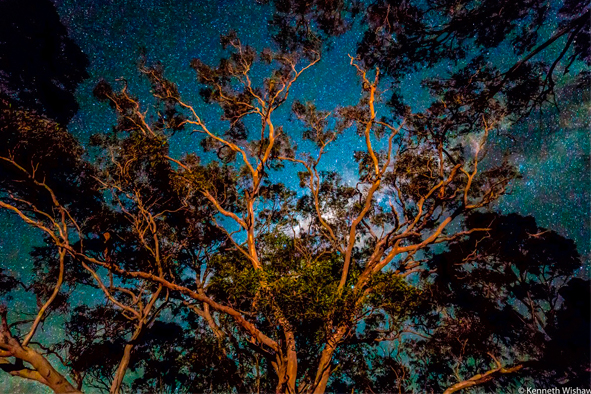MALENY residents might not be able to see the Milky Way within 10 to 20 years if rampant light pollution is not addressed, experts say.
The hinterland town is the last area of coastal south east Queensland not severely affected by light pollution, but experts fear poor policy and population growth could soon literally black out the view of stars from the night sky.
With concerns mounting, residents are now petitioning the state government to enforce appropriate street lighting.

Australasian Dark Sky Alliance co-founder Dr Ken Wishaw told GC&M News that in a recent survey he counted 3,100 stars from the Maleny Observatory, yet just one kilometre away at Cloud Walk observed just 230.
Anyone in Brisbane would be lucky to count 50 stars on the clearest night.
“The single biggest contributor in Maleny is mercury vapour street lighting,” Dr Wishaw said.
“It accounts for 60 per cent of streetlights and Maleny has the highest percentage of any hinterland town.”
These lights “spew” light in all directions, which can affect observability hundreds of kilometres away.
Energy Queensland, which owns the streetlights, is currently replacing mercury lights – which were banned nationally last month – but Dr Wishaw said their LED replacements were still problematic because they continued to light in all directions and emitted high ‘blue light’ content.
Excessive blue light not only creates health issues for humans including the disruption of sleep patterns but it can disrupt the nocturnal habits of some animals.

The petition says Maleny’s dark skies must be preserved. “Maleny residents treasure the star-studded beauty of their night sky, and such a spectacle is a major attraction to both national and international visitors,” it states. “Maleny Observatory at Maleny Golf Club is a popular destination. As an officially designated observatory (DO3-52) it is subject to special consideration with regards to nearby lighting under Australian Standard 4282.
“Maleny and surrounding districts enjoy diverse wildlife, much of which is adversely affected by excessive artificial lighting at night.
“The major contributor to light pollution is street lights, particularly those that shine light above the horizontal (unshielded) and have a high blue content in their light.”
The petition urges parliament to replace all streetlights in Division 5 with those that comply with the Australian Government National Light Pollution Guidelines, and the Australasian Dark Sky Alliance (ADSA) Approved criteria.

Member for Glass House, Andrew Powell, said converting streetlights to the suggested standard was a “no brainer”.
“It ensures we keep Maleny as a true “dark sky” – one of the very last left in all of south east Queensland. It’s more economical – meaning our councils won’t need to pay so much to keep the lights on,” he said.
“Local Governments have tried to convince the State Government of the benefits previously – and their offer and proposals were rejected.
“Let’s get the State Government to sit up and notice through the sheer number of Queenslanders that show their passion for the cause by signing the petition.”
Dr Wishaw said he was passionate about continuing to educate people about the night sky, stars and aboriginal astronomy, but it is “hard to appreciate your home, the Milky Way if we can’t see it”.
Images by Ken Wishaw